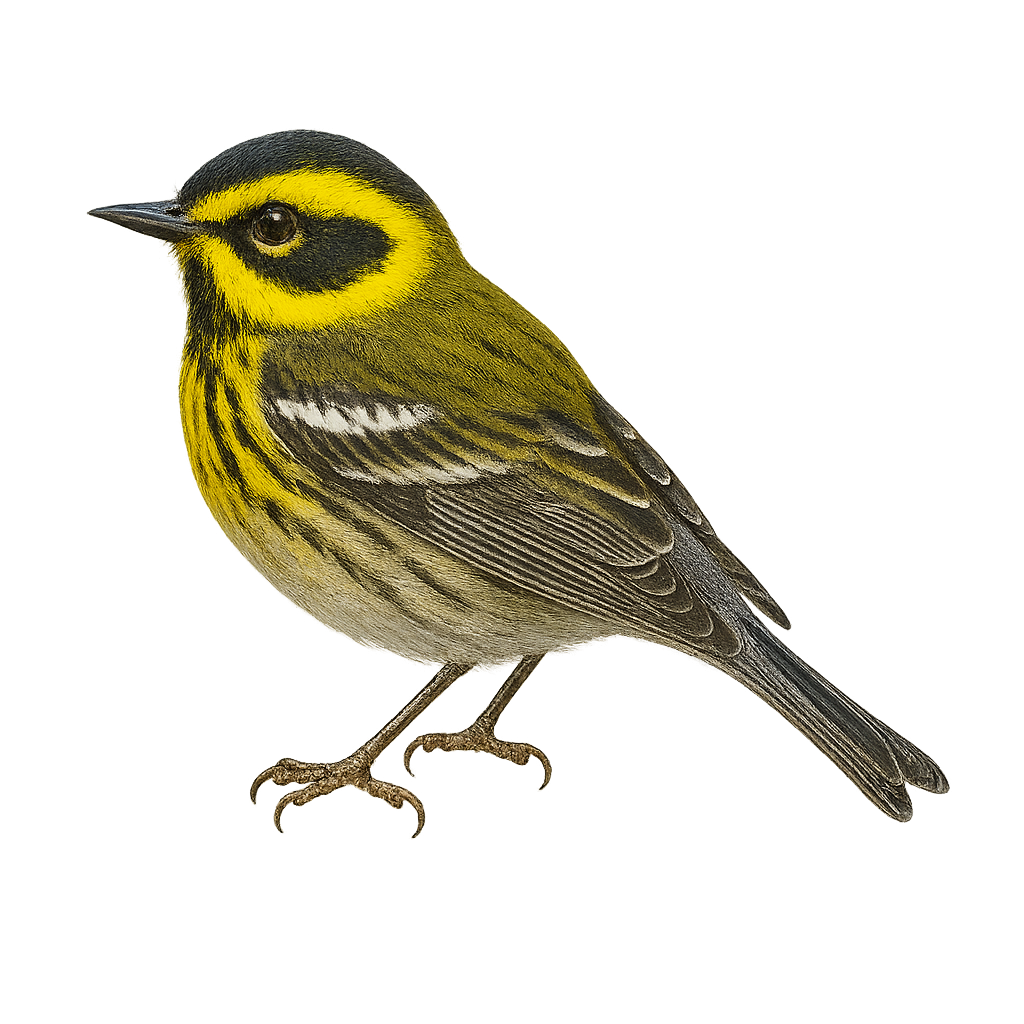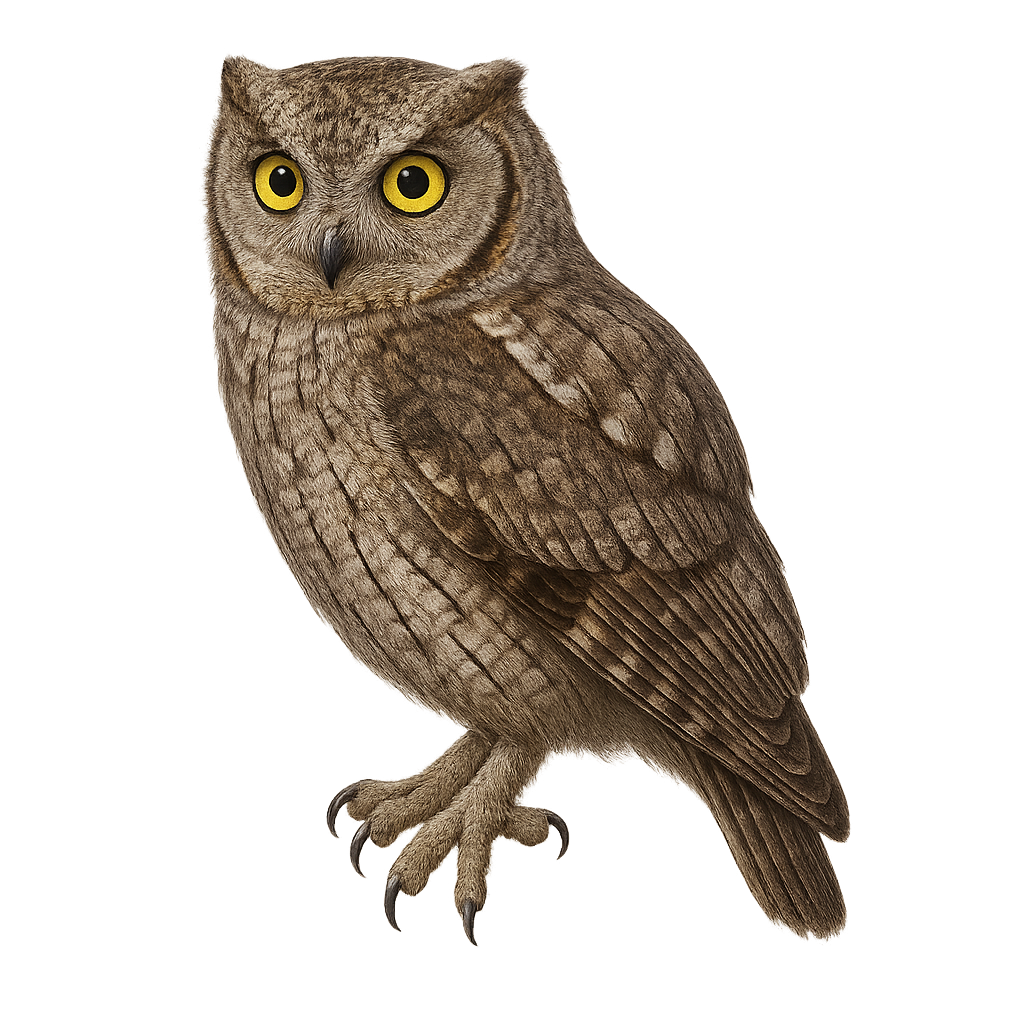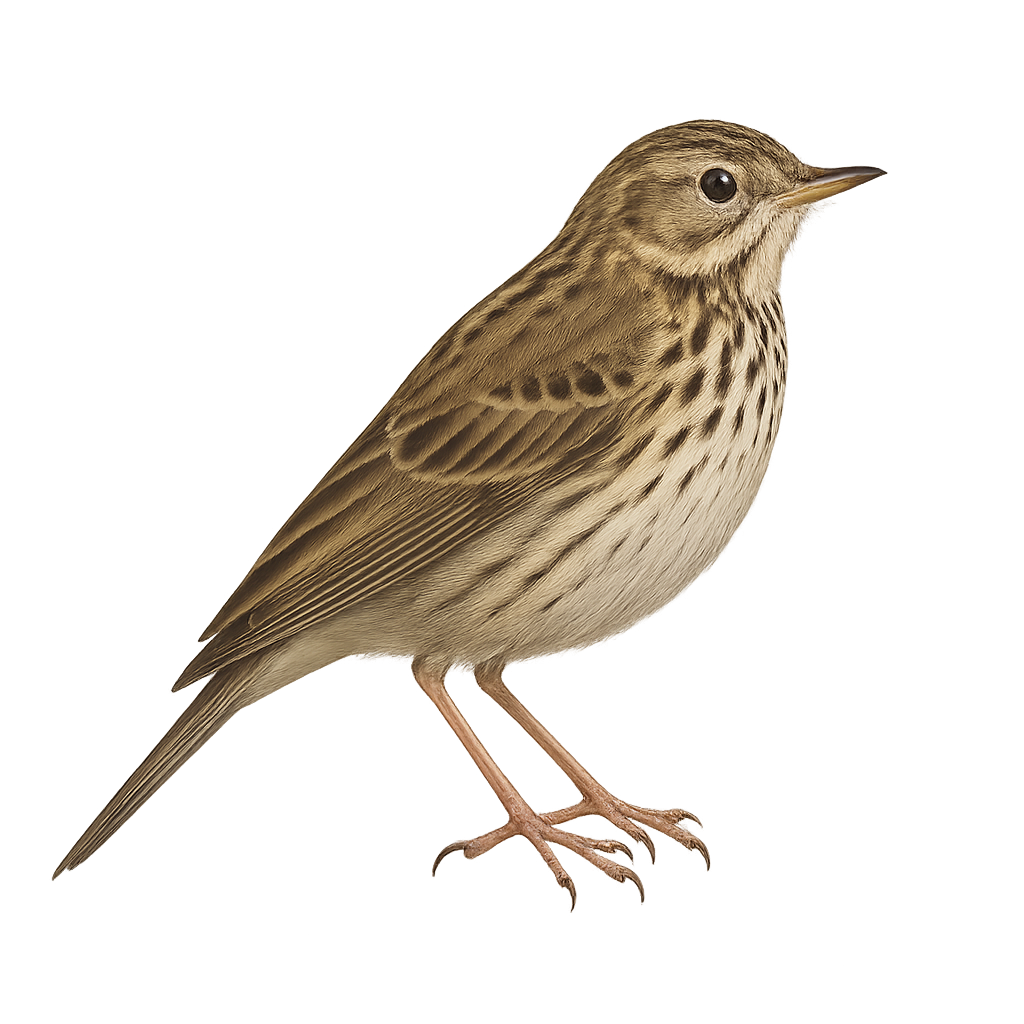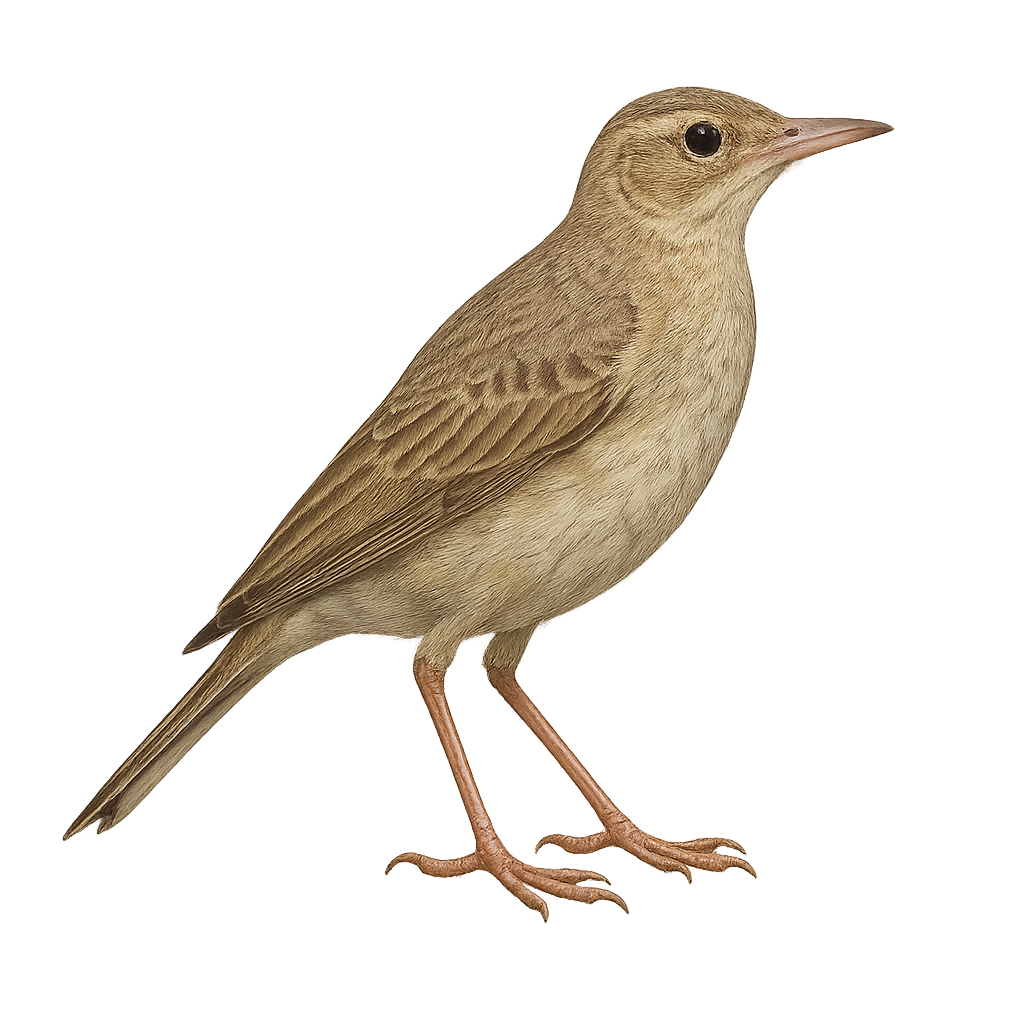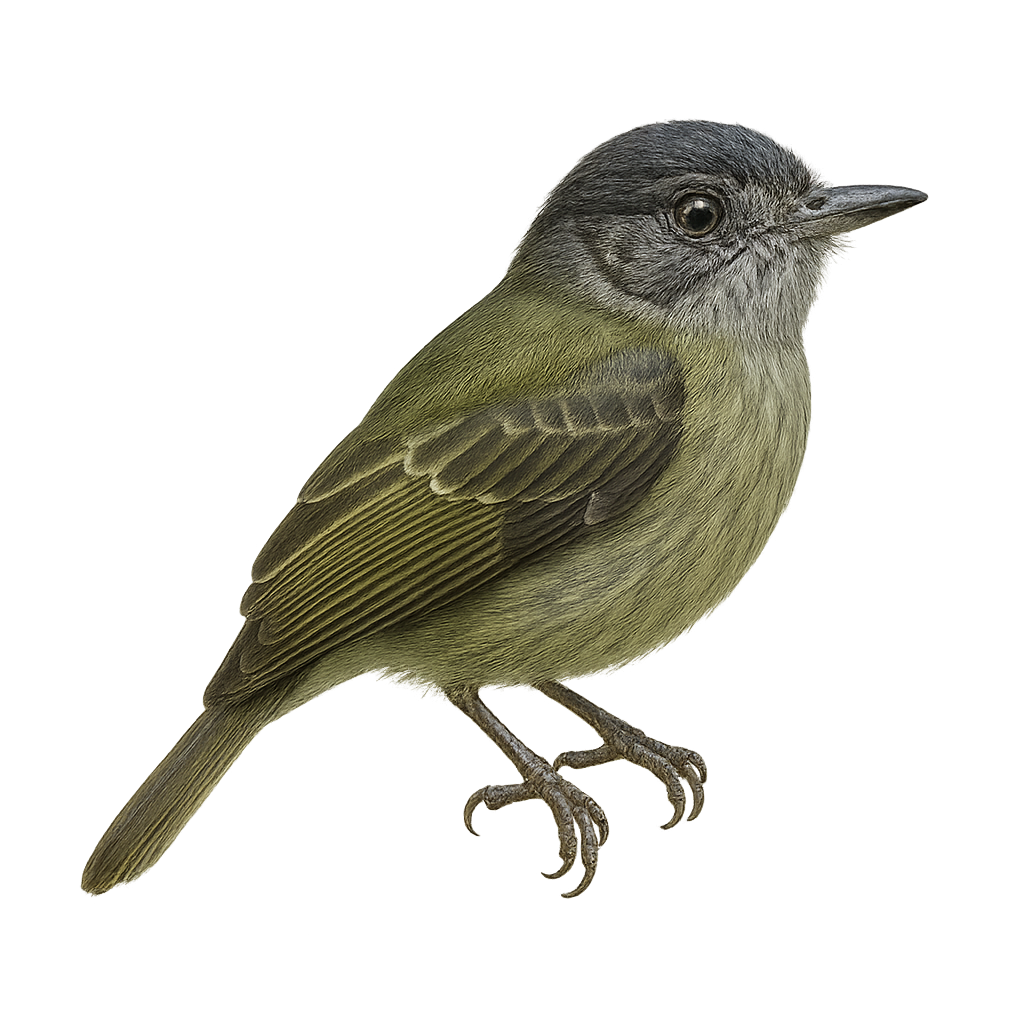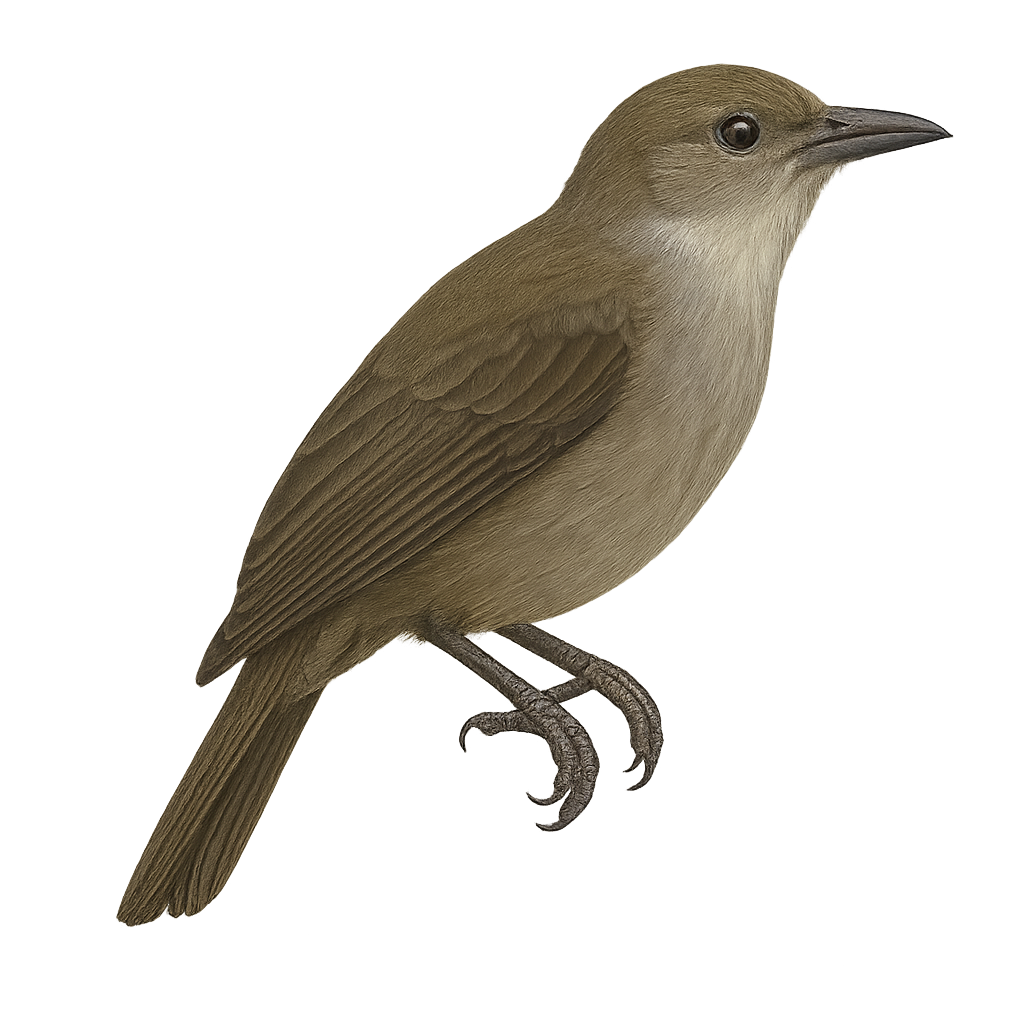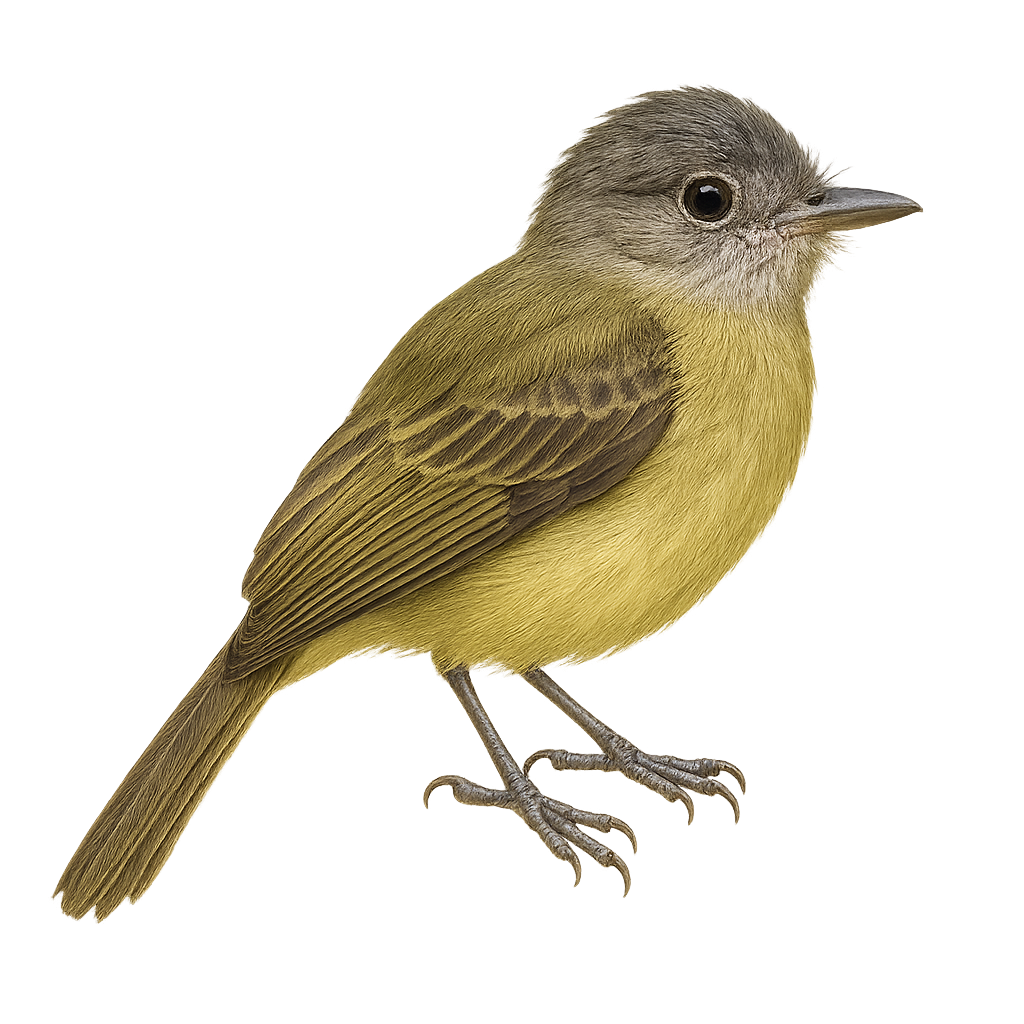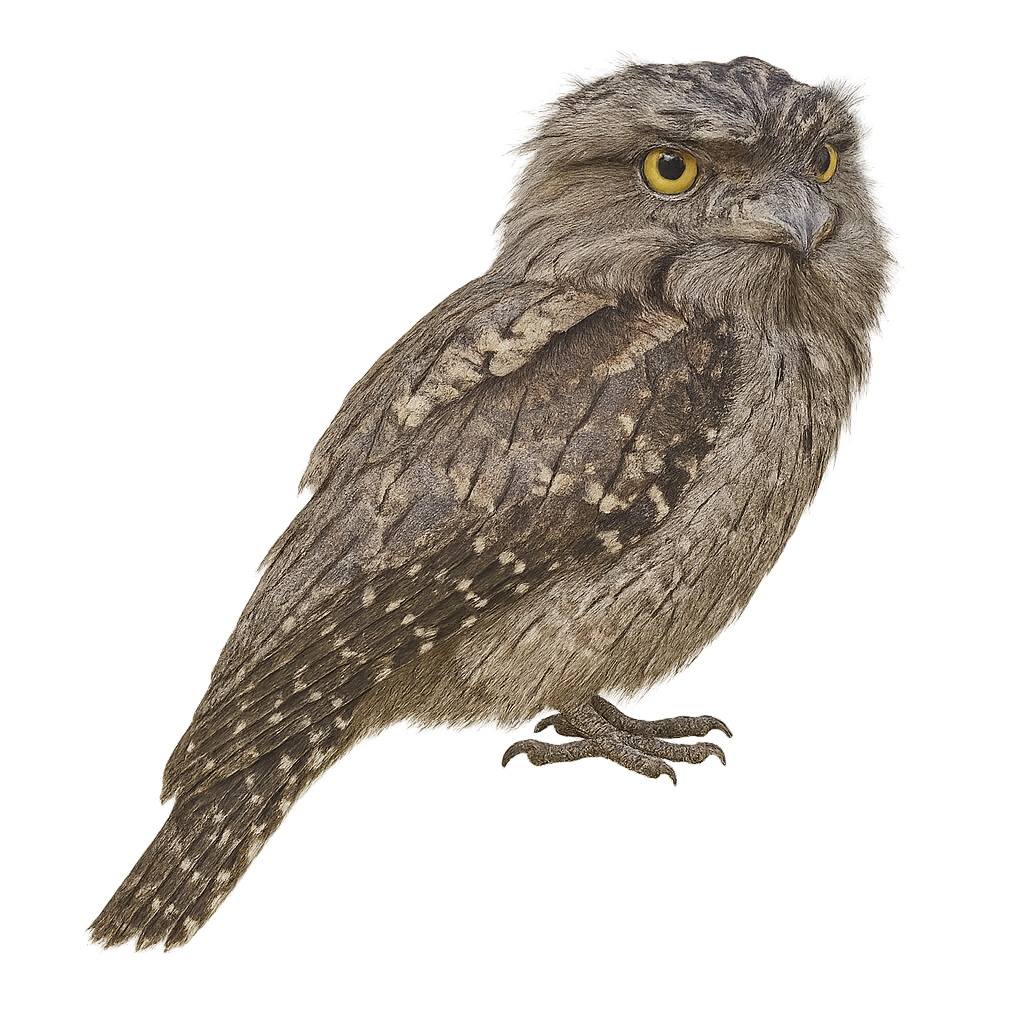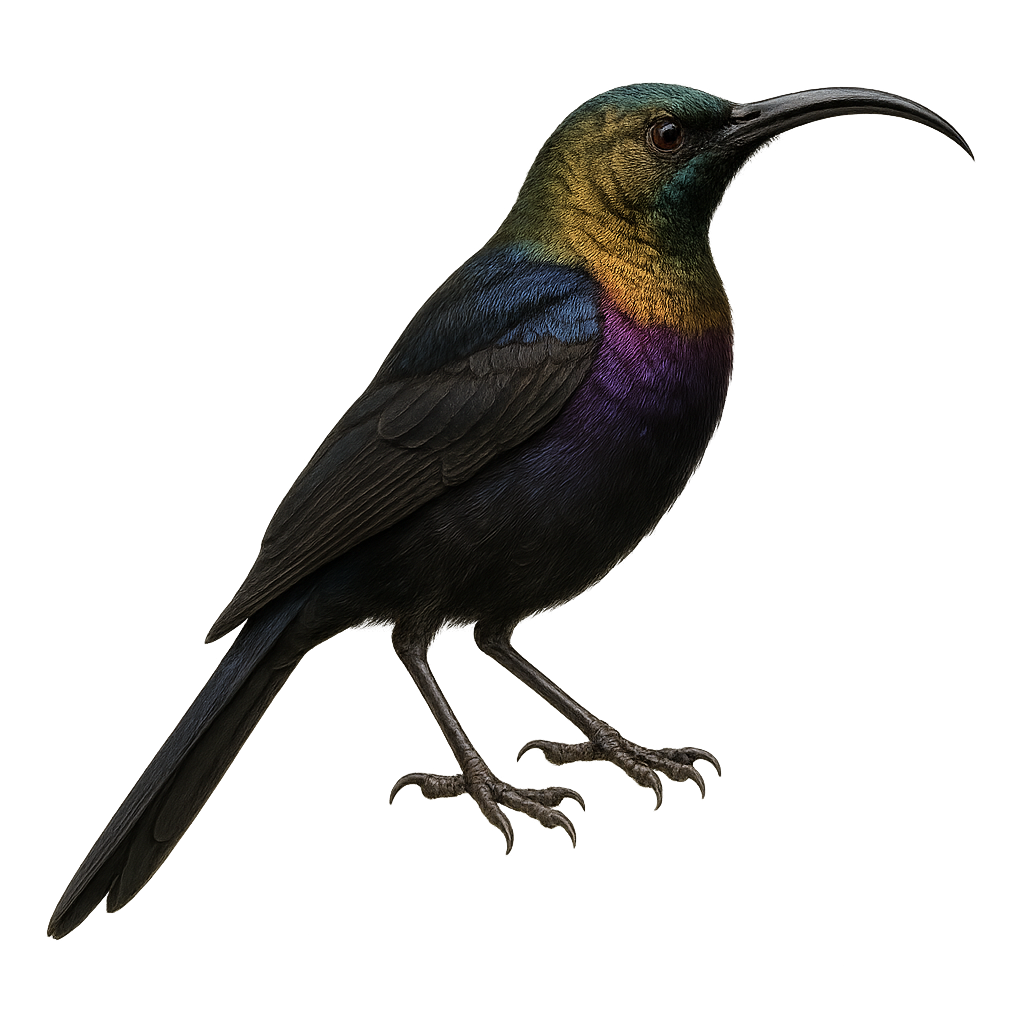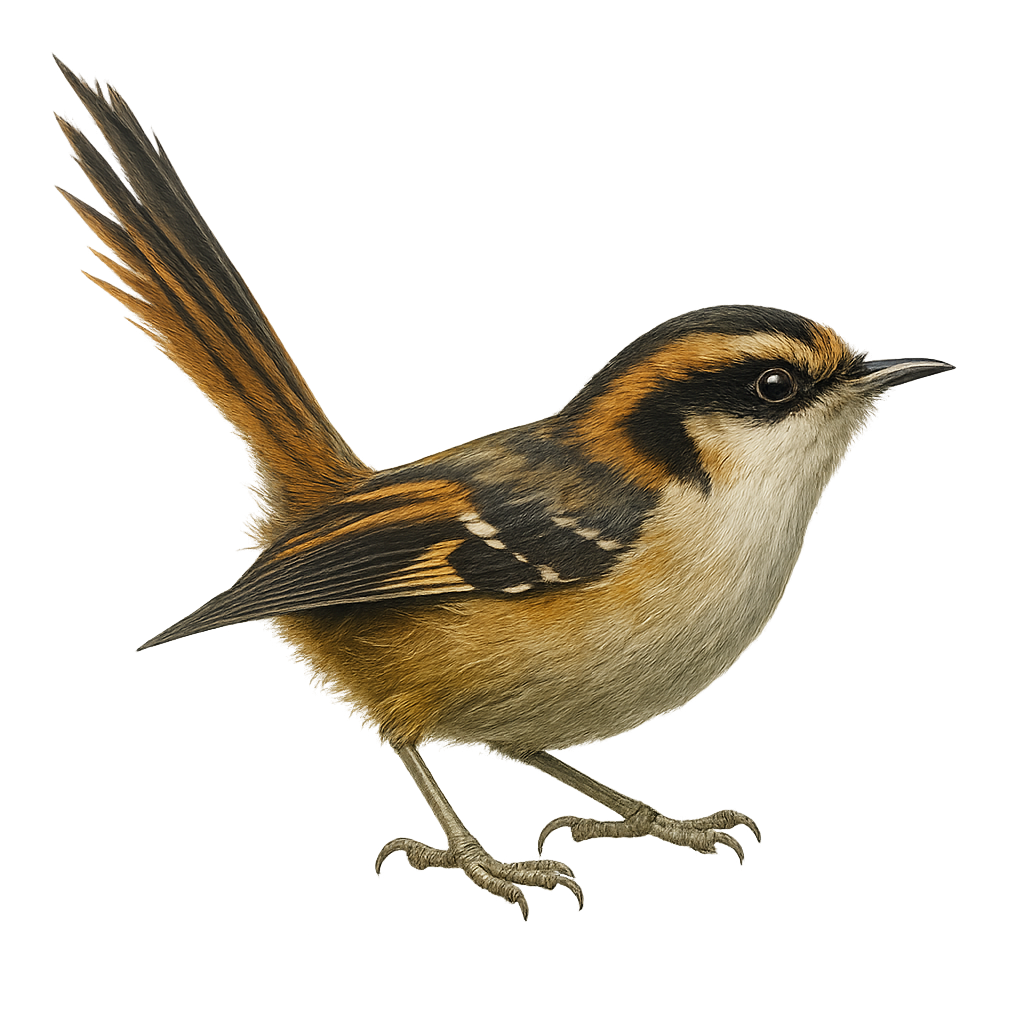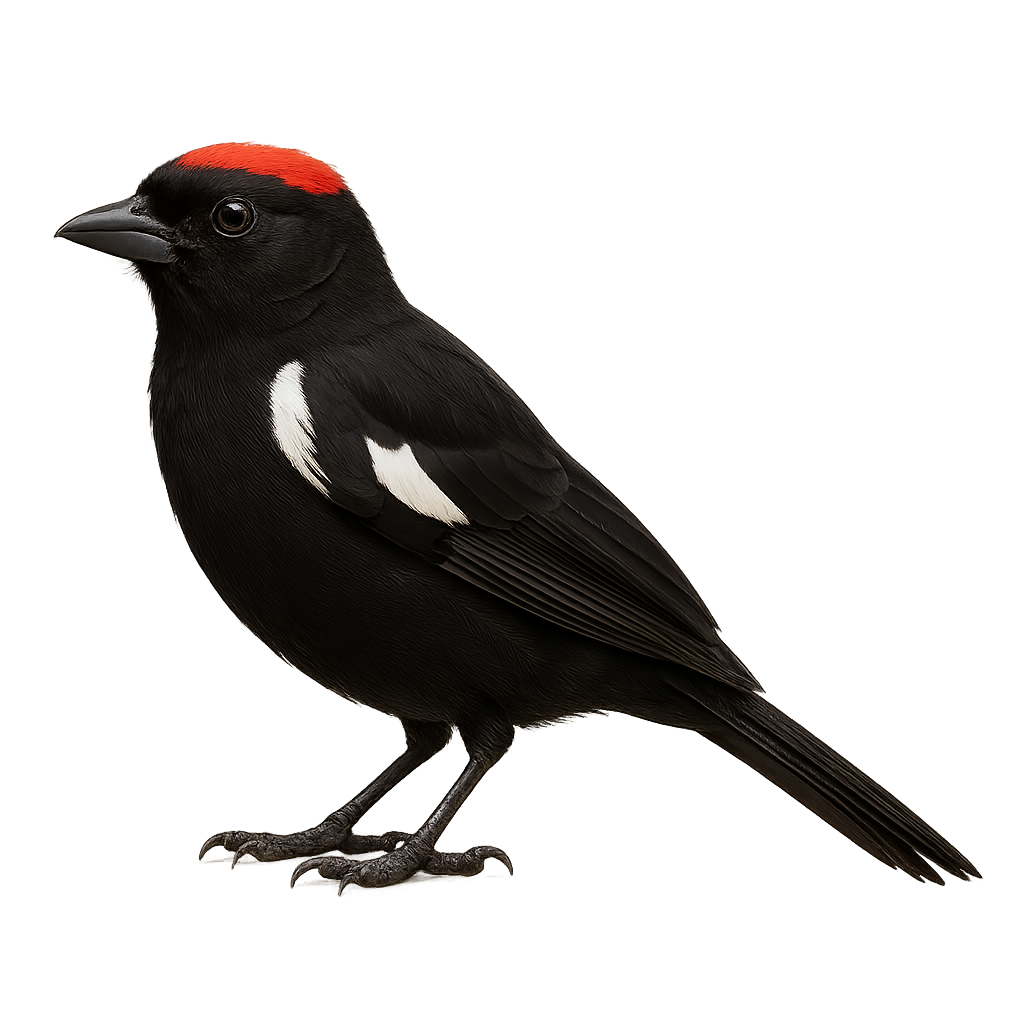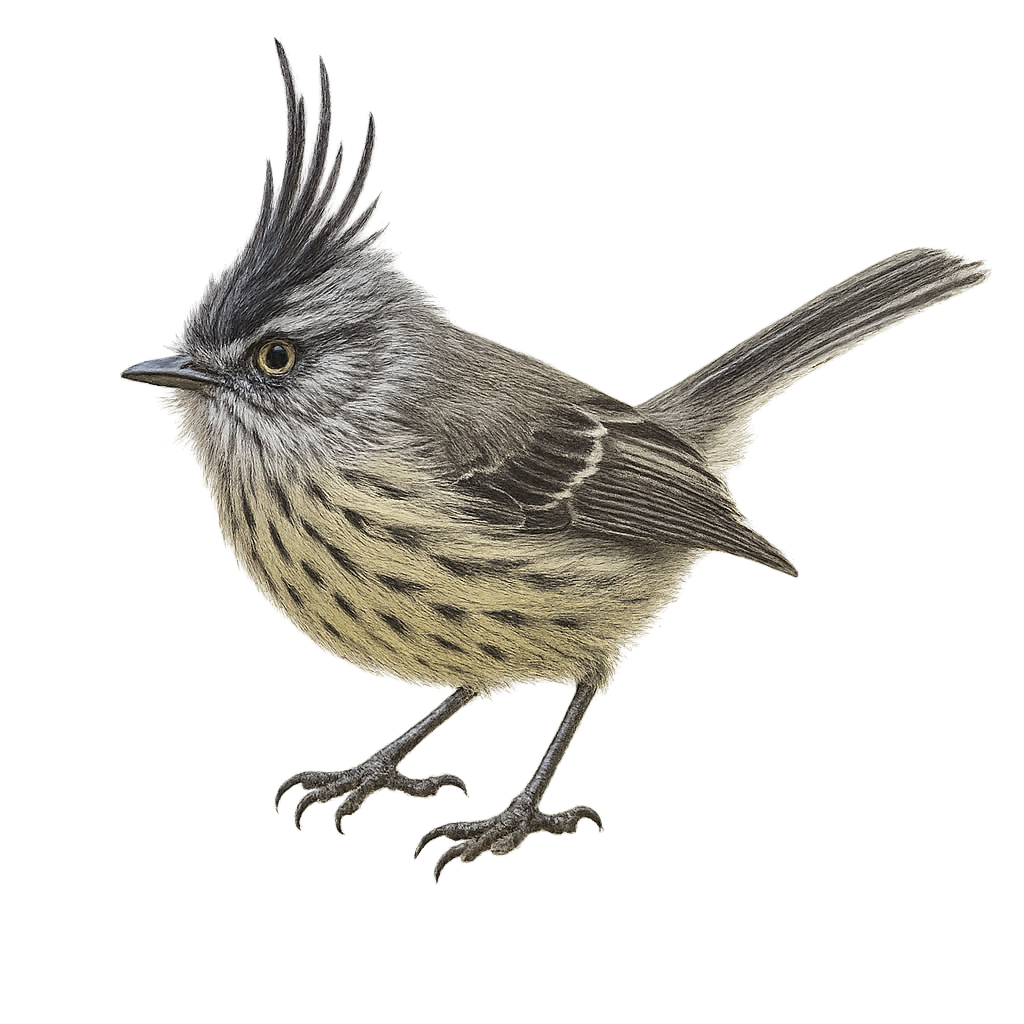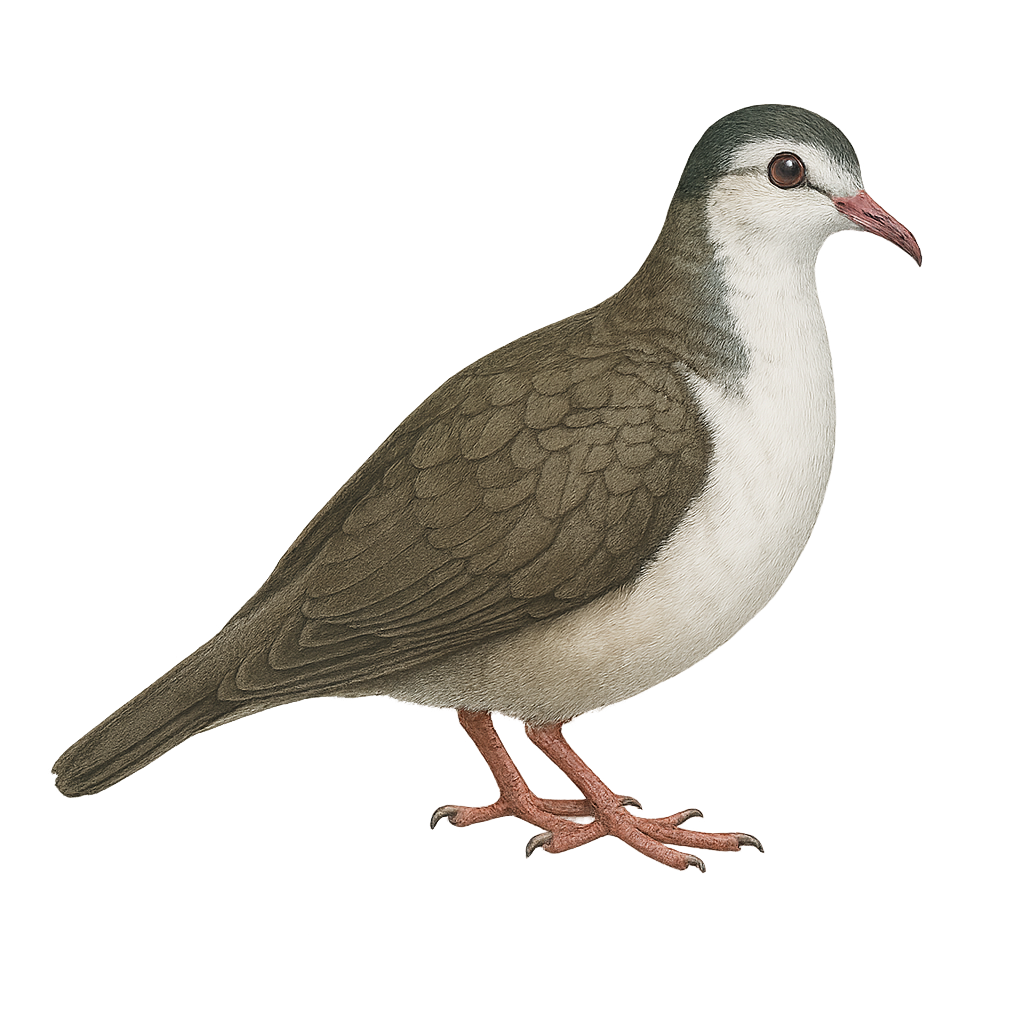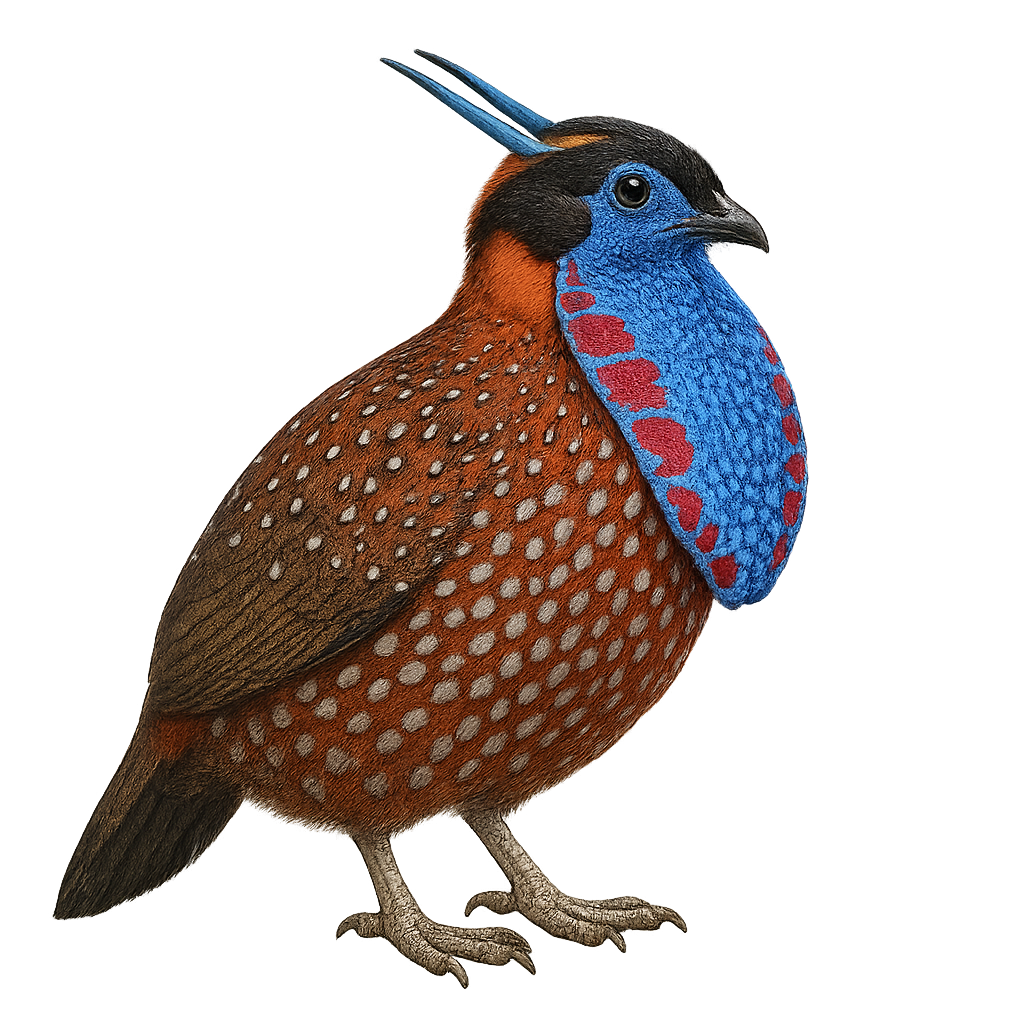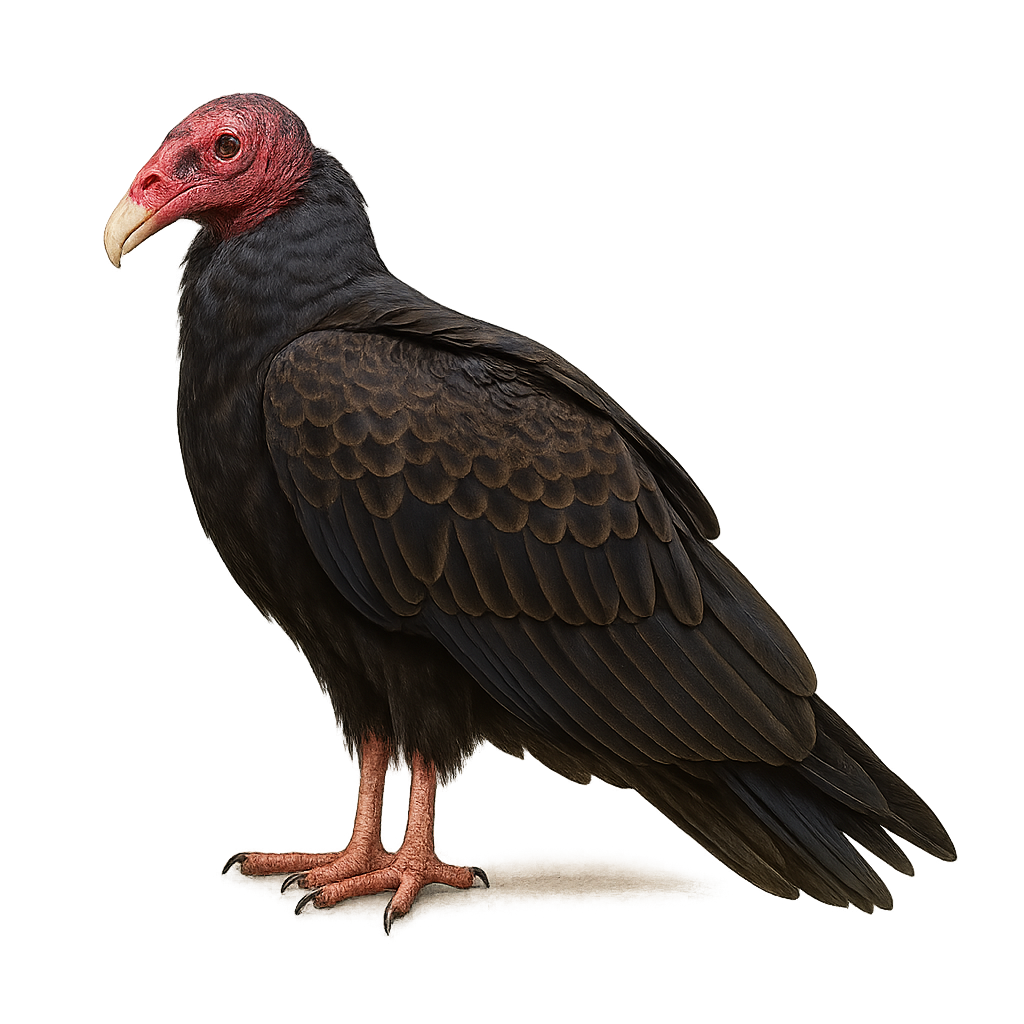The Trumpet Manucode, scientifically known as Phonygammus keraudrenii, is a captivating bird from the Paradisaeidae family. It inhabits the tropical rainforests of New Guinea and nearby islands. This bird is notable for its glossy black plumage with metallic sheen and its distinctive trumpet-like call, which gives it its name. The Trumpet Manucode is a medium-sized bird, measuring about 42 cm in length. It primarily feeds on fruits and insects found in the forest canopy. Although its habitat is relatively stable, deforestation poses a potential threat to its population.
The Tropical Parula, or Setophaga pitiayumi, is a small, brightly colored songbird, primarily blue-gray with a bright yellow belly and a white throat. It is found in the tropical and subtropical forests of Central and South America, where it primarily feeds on insects. Often seen actively moving through foliage in search of food, it is easily recognizable by its melodious song. This species is generally solitary or found in small family groups and is known for its adaptability to various habitats, including secondary forests and degraded wooded areas.
The Townsend's Warbler is a small songbird belonging to the Parulidae family. It is primarily recognized by its distinctive plumage: an olive-green back, bright yellow breast, and black streaks on the head. Males display more pronounced patterns than females. This species is mainly found in the coniferous forests of western North America, where it feeds on insects and spiders. Migratory, it winters in the southern United States and Central America. The Townsend's Warbler is known for its melodious song, composed of clear and repetitive notes. Although its habitat is threatened by deforestation, it is currently classified as a species of least concern by the IUCN.
The Trinidad Piping Guan, or Pipile pipile, is a rare and endemic bird of Trinidad Island. This large bird, part of the Cracidae family, is recognizable by its glossy black plumage, distinctive white throat, and long red legs. It primarily inhabits the island's tropical rainforests and wooded areas. This bird is mainly frugivorous, feeding on fruits, seeds, and occasionally insects. Unfortunately, the Trinidad Piping Guan is threatened by habitat loss and hunting. It is classified as vulnerable by the IUCN. Its conservation is crucial to maintaining Trinidad's unique biodiversity.
The Tropical Screech Owl, or Megascops choliba, is a small nocturnal bird of prey belonging to the Strigidae family. It is widely distributed across Central and South America, inhabiting various forest types, from wooded areas to the edges of tropical forests. This owl is characterized by its modest size, measuring about 23 to 25 cm in length, and its cryptic plumage that allows it to blend into its surroundings. Its plumage is generally grayish-brown with streaked patterns, providing excellent camouflage. The Tropical Screech Owl is primarily nocturnal, feeding on small insects, rodents, and occasionally small birds. Its call is a soft, repetitive trill, often heard at dusk and during the night.
The Great Spotted Woodpecker is an iconic bird of forests in Europe, Asia, and North Africa. It measures about 25 to 30 cm in length, with a wingspan of 40 to 45 cm, and weighs between 70 and 100 g. It is easily recognizable by its black and white plumage, with a red head in males and a red patch on the nape in females. The Great Spotted Woodpecker is an excellent climber, using its strong beak to tap on tree trunks in search of insects, primarily insect larvae and ants, which it extracts with its long, sticky tongue. It is often seen hammering wood in search of food or to mark its territory. The Great Spotted Woodpecker is found in a variety of forests, from broadleaf to mixed forests, and although its population remains stable, it is sometimes affected by habitat loss.
The tree pipit is a small passerine about 15 cm long with streaked brown upperparts and a pale breast. It inhabits woodland edges, open woodlands and hedgerows, feeding mainly on insects and seeds. During breeding, males sing in flight and from low perches to attract mates and defend territory.
The tawny pipit is a small passerine of 16–17 cm with finely streaked sandy plumage and a pale breast. It inhabits open steppe, dry fallow land and garrigue, feeding mainly on insects and seeds picked from the ground. During breeding, males perform singing flights and sing from low perches to attract females and defend their territory.
The Leptopogon taczanowskii, or Taczanowski's Tyrannulet, is a small bird from the Tyrannidae family. It is primarily found in the humid forests of the Andes, where it moves nimbly through dense vegetation. Its plumage is mainly olive green with lighter shades on the belly, allowing it to blend into its surroundings. This bird is known for its distinctive song, often heard before seen. It feeds mainly on insects, which it catches in flight or finds on leaves. Taczanowski's Tyrannulet is a discreet bird, often difficult to observe due to its wary behavior and dense habitat.
The Thick-billed Berrypecker is a medium-sized bird endemic to the tropical forests of New Guinea. It is characterized by its thick and robust beak, adapted to its diet mainly consisting of berries and fruits. Its plumage is generally dark, with shades of olive green and brown, allowing it to blend into its dense forest habitat. This bird is often observed in small groups or pairs, actively moving through the canopy in search of food. Although little studied, it likely plays an important role in seed dispersal, thus contributing to the regeneration of its ecosystem. Its population is currently stable, but deforestation could pose a future threat.
The Traylor's Flycatcher, or Tolmomyias traylori, is a small passerine bird in the Tyrannidae family. It is primarily found in the humid forests and edges of the Amazon region. This bird is characterized by its olive-green plumage and pale yellow belly, with a head often marked by a darker cap. Known for its melodious song and distinctive calls, the Traylor's Flycatcher feeds mainly on insects, which it catches in flight or on leaves. It is often seen in small groups or pairs, actively moving through the canopy in search of food. Although its habitat is threatened by deforestation, the species is currently listed as of least concern by the IUCN.
The Tawny-throated Dotterel is a medium-sized bird known for its distinctive tawny throat and collar. It primarily inhabits open grasslands and wetlands in South America, especially in Argentina, Chile, and Uruguay. Often seen in small groups, this bird feeds on insects and small invertebrates. Its ability to blend into its surroundings can make it difficult to spot. Although primarily terrestrial, it can fly short distances to escape predators. The breeding season varies by region but is generally influenced by local climatic conditions.
The Tawny Frogmouth, Podargus strigoides, is a nocturnal bird native to Australia, often mistaken for an owl due to its appearance. It has grey-brown plumage that allows it to blend seamlessly into tree bark. Its wide, flat beak is adapted for catching insects and small vertebrates. Unlike owls, its eyes are forward-facing, providing binocular vision. Primarily active at night, it spends its days motionless, camouflaged against tree trunks. The Tawny Frogmouth is monogamous, forming long-lasting pairs. It plays an important ecological role in controlling insect populations.
The Tacazze Sunbird is a bird from the Nectariniidae family, mainly found in the mountainous regions of East Africa. It is easily recognizable by its iridescent plumage, which ranges from metallic green to deep purple, depending on the light angle. Males display brighter colors than females, who are generally duller. This bird primarily feeds on nectar but supplements its diet with insects and spiders. It is often seen in gardens, forests, and wooded areas, using its long curved beak to access flowers. The Tacazze Sunbird is a diurnal bird, active mainly in the morning and late afternoon.
The Thorn-tailed Rayadito, or Aphrastura spinicauda, is a small bird endemic to the temperate forests of southern South America, particularly in Chile and Argentina. It measures about 14 cm in length and is distinguished by its long, spiny tail, which gives it its name. Its plumage is primarily brown with shades of rufous and black, and it features a distinctive white stripe above the eye. This bird is often seen moving nimbly through branches in search of insects and spiders, which make up the bulk of its diet. Known for its social nature, it is often spotted in small groups or pairs, and is recognized for its melodious and complex song.
The Tawny-crested Tanager, or Heterospingus xanthopygius, is a small, colorful songbird of lowland tropical rainforests along the Pacific coast of southern Costa Rica and western Panama. It is recognized by its reddish-brown eyebrow stripe, olive back, pale underparts, and bright yellow rump. Active in the canopy, it often joins mixed-species flocks and feeds on fruits, insects, and occasionally nectar. Though discreet, it is striking and relatively little-known outside its limited range. Its population is considered stable but sensitive to habitat fragmentation.
The Tufted Tit-Tyrant, or Anairetes parulus, is a small passerine bird belonging to the Tyrannidae family. It is easily recognizable by its gray and white plumage, adorned with a distinctive tuft on its head. This bird is primarily found in the mountainous regions of South America, notably in Chile, Argentina, Bolivia, and Peru. It inhabits montane forests, shrublands, and open grasslands, often at altitudes ranging from 500 to 4000 meters. The Tufted Tit-Tyrant is an active and agile bird, often seen hopping from branch to branch in search of insects. Although it is relatively not very shy, it can be challenging to spot due to its small size and lively behavior.
The Toco Toucan, scientifically known as Ramphastos toco, is a striking bird native to the tropical forests of South America. Easily identifiable by its large, vibrant red bill, it measures about 55 to 65 cm in length. Its plumage is predominantly black with a white throat, and its eyes are encircled by a blue ring. Despite its size, the bill is lightweight due to its hollow structure, aiding in the capture of fruits, insects, and occasionally small reptiles. The Toco Toucan is an adept climber and uses its wings for short flights between trees. It lives in small groups and communicates through harsh calls, playing a crucial role in seed dispersal.
The toco toucan is the largest toucan species (55–65 cm long), with black plumage and a white throat topped by a large bright orange bill. It inhabits tropical humid forests and woodland savannas in South America, feeding on fruits, insects, and small vertebrates. During the breeding season (February to June), it nests in tree cavities and pairs perform aerial display flights.
The Tambourine Dove, Turtur tympanistria, is a medium-sized pigeon known for its pinkish-brown plumage and black-spotted wings. It is primarily found in sub-Saharan Africa, inhabiting tropical forests, wooded savannas, and agricultural areas. Its call, a soft and repetitive cooing, is often heard at dawn and dusk. This species is monogamous, forming lasting pairs. It feeds mainly on seeds, small fruits, and insects. Although its habitat is threatened by deforestation, it remains relatively common and adaptable.
The Temminck's Tragopan is a colorful pheasant native to the mountainous forests of Southeast Asia, particularly in China, India, and Myanmar. This pheasant is renowned for its vibrant plumage, especially in males, which display bright colors ranging from red to blue, with white-spotted patterns. Females, more discreet, have brown plumage that allows them to blend effectively into their surroundings. The Temminck's Tragopan is a shy bird, preferring dense and humid forest areas where it primarily feeds on vegetation, seeds, and insects. Although its habitat is threatened by deforestation, it remains relatively common in some regions.
The Thick-billed Ground Pigeon is a fascinating bird belonging to the Columbidae family. It is primarily found in the tropical forests of New Guinea. This bird is distinguished by its subtly colored plumage of browns and grays, allowing it to blend seamlessly into its forest environment. The Thick-billed Ground Pigeon is a terrestrial bird, preferring to walk on the ground rather than fly. It mainly feeds on seeds and small fruits found on the forest floor. Its discreet nature and suspicious behavior make it difficult to observe in its natural habitat. Despite this, it plays a crucial role in the ecosystem by dispersing seeds.
The Turkey Vulture, or Cathartes aura, is a large scavenging bird of prey native to the Americas, easily identified by its red, featherless head and dark brown plumage. It plays a vital role in the ecosystem by consuming carrion, thus helping to prevent the spread of disease. With an excellent sense of smell, it can detect gases emitted by decaying carcasses. In flight, it is often seen soaring with its wings in a V-shape, using thermal updrafts to conserve energy. Although typically solitary, it can gather in large groups to feed. Its ability to adapt to various habitats, from forests to deserts, makes it a resilient and widespread bird.




